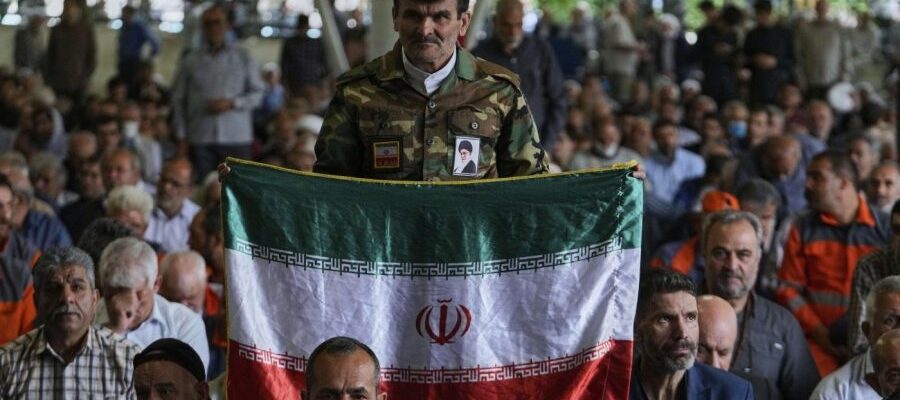Trump should not repeat the Iraqi Bush’s mistakes in Iran

In his basic book “The Achilles Trap”, Steve Cole provides an accurate documented narration on how mutual concepts, intelligence failure, and institutional group agreement, to the American disastrous invasion of Iraq in 2003. The book follows how American policy makers, driven by home and regional status, MISREAD SADDAM Husque.
At the same time, US intelligence services were under pressure to produce final reviews, often the worst scenarios and failed to calculate the internal logic of Saddam’s decisions.
The issue of Iraq clarifies how the ideology, bureaucratic momentum and political agenda in Washington have established a closed information system that inflated fear and diplomacy of marginalization and eventually turned into defective assumptions into a justification for the war. The title “Achilles Trap” refers to the mutual deviation of Saddam and the United States in courses of bad governance, with no ability to walk.
This warning tale is more than just a retroactive effect. It provides a vital lens to understand how similar standard spots continued to form American foreign policy – especially towards Iran.
Cole Central thesis – Washington can become a prisoner of its wrong novels – resonating strongly in the context of American policy towards Iran over the past four decades. Washington has always imagined Iran through a framework that gives doubts about understanding and extreme demands for practical diplomacy.
The complex domestic policy in Iran, the decision -making structures of the classes and the rational pursuit of national security are often reduced to a unilateral threat. This flatness has been strengthened by the same forces that formed America’s approach to Iraq in the early first decade of the twentieth century: excessive simplicity, pressure pressures and the national security culture that is equivalent to alert.
To be clear, Iran is not Iraq. The two countries differ deeply in their history, political systems and strategic goals. However, a continuous bloc within the Foreign Policy Foundation approached Iran with a similar mindset to look at the one that prompted the Iraq war.
Intelligence is filtered through the assumptions of the worst cases. Iranian deterrence and regional behavior are not explained as strategic accounts, but as evidence of inherent hostility. This narrow explanatory lens has distorted restricted threats and diplomacy assessments.
This is the most obvious in the treatment of the Iranian nuclear program. Despite the years of childhood inspections by the International Atomic Energy Agency and the absence of any conclusive evidence indicating the weapons voltage, the program is still being filmed in the American discourse as a secret military threat. The peaceful nature of the Iranian nuclear program-rooted in the diversification of energy, technological development and national sovereignty-has been overwhelmed by the worst assumptions that are exaggerated by political actors and pressure networks.
To understand the assets and the full intention behind Iran’s nuclear efforts, it is important to remember that the basis of this program has not been placed in secrecy, but in open cooperation with Western institutions. The logical basis for Iranian nuclear energy aspirations precedes the 1979 revolution and has a basis for international cooperation. Indeed, during the 1970s, a study by the Stanford Institute for Research at the request of the United States government strongly recommended that Iran develop a wide civil nuclear program to meet its future energy needs. The report expected that despite the extensive oil reserves in Iran, local consumption and global energy dynamics will make nuclear energy an essential component of its long -term economic stability.
However, over the past two decades, this historical context has been erased from the prevailing novels. Instead, the framework has turned the problem of controlled nuclear proliferation into a perception crisis, undermining diplomacy and strengthening a confidence cycle. This is not an accidental distortion. It is a systematic.
The constant distortion of the facts of Iran is not operated not only by defective analysis, but through a carefully created narration designed to perpetuate the conflict. Misunderstanding about Iran from intelligence failures – on the contrary, does not arise for more than 20 years, the American intelligence community has constantly concluded that Iran is not following nuclear weapons, a position reaffirmed in the annual threat assessment report 2025.
Instead, these misconceptions are pushed through a very firm pressure network that takes advantage of continuous hostility. This network-the new conservative ideologies, the interests of the defense industry and the supportive calling groups of Israel-systematically depicted Iran as a permanent enemy. Politics discussions were fake to photograph the media and imposed highly slope political costs on those who support diplomacy. Facing this device is an important important for the American leadership.
President Trump is now facing a decisive moment. Securing a solid and balanced agreement with Iran requires overcoming this firm system. You should face the novels that reinforce it and the fears it sows face to face. Strategic participation must replace the plays; Diplomacy must serve the national interest, not the ideological crusade.
The opposition of this device is not a symbolic gesture. It is the main step towards restoring American foreign policy from the grip of mysterious networks and align them with the preferences of the American people. In this context, the successful agreement with Iran not only defined a diplomatic achievement – it may also prove that Trump confirmed the control of the mechanism that dictates over the decades of war and peace conditions in Washington.
Reza Nasri is an international lawyer and foreign policy analyst.
